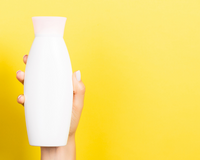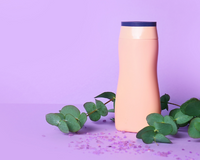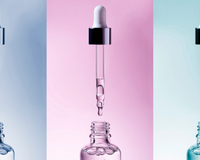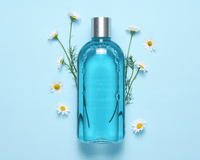Moisturizer For Dry Skin
Dry skin makes the skin look and feels rough, itchy, flaky, or scaly. It also makes the skin look and feels dry. In different people, the place where these dry patches appear can be different. Whether you're young or old, you can get it. Dry skin, which is also called xerosis or xeroderma, can be caused by cold or dry weather, sun damage, harsh soaps, and over-bathing. For dry skin to be found, your doctor will likely look at you and ask about your medical history. What causes dry skin, how you bathe, and how you care for your skin with moisturizer for dry skin might be talked about.
If your doctor thinks that your dry skin is caused by a medical condition, like an underactive thyroid, he or she might want you to get some tests to see if that is the case (hypothyroidism). A lot of times, having dry skin is a sign of something else going on with your skin. This could be dermatitis or even psoriasis. Dry skin often responds well to changes in your lifestyle, such as using moisturizers and not taking long, hot showers and baths. People with very dry skin might need a moisturizer made for them by their doctor.
Why Do You Need Moisturizer For Dry Skin?
If you have a serious skin disease, a doctor may want to treat it with a cream or ointment that is prescribed for you. A lotion with hydrocortisone in it may help your dry skin itch if it gets so bad that it hurts. If your skin breaks open, your doctor may give you wet dressings to keep it from getting infected.
You can do a lot to improve dry skin on your own, like moisturizing and protect yourself from the sun all year long. Try different products and skincare routines until you find one that works for you.
Dry skin can be short-term or long-term. You might only get it in the winter, for example, or you might need to treat it for a long time. If you have dry skin, the signs and symptoms might be different for different people based on their age, health, skin tone, living environment, sun exposure, and how much they sweat.
Moisturize
Keep your skin's protective layer healthy by sealing it in water with moisturizer, which helps keep it healthy. Moisturize your hands and other parts of your body all day long. Before you go outside, put on a moisturizer that has sunblock in it or a broad-spectrum sunscreen with an SPF of at least 30. Even on cloudy days, this will protect your skin. You should put on a lot of sunscreens, and you should apply it every two hours, or more often if you're swimming or sweating a lot.
Limit your water exposure. Keep the time you spend taking a bath or shower to less than 10 minutes or less. Use water that isn't too hot. Rinse, then pat dry.
Clean your body with a gentle cleanser or soap that doesn't have any allergens in it. Try a cleansing cream or shower gel that doesn't have soap in it to clean your body. If you wash your hands a lot, you might want to use fragrance-free moisturizing soap that doesn't have alcohol or other ingredients that can cause allergies (hypoallergenic soap). Rinse well and pat dry. It's best to put on a moisturizing cream while your skin is still wet.
Make sure you shave with care. When you shave, your skin can get dry. Do this before you start shaving to make sure your skin isn't going to be too dry. You should shave in the direction of hair growth unless that makes your skin hurt. You should use a sharp knife and rinse it with warm water after each stroke. When you are done, apply moisturizer.
How To Protect Dry Skin?
Protect your skin as much as possible in cold or windy weather. Harsh weather can be very drying to the skin. When you're outside, scarves, hats, and gloves or mittens can help protect your skin from the cold. Dress in gloves. When you garden, use harsh cleaners, or do other things that dry your skin, wear gloves that are appropriate for the job.
Rinse and moisturize your body after you have been swimming. Make sure you do this if you've been swimming in a very chlorinated pool. When you're thirsty, drink. It's important to drink non-caffeinated drinks every day to keep your body's tissues and your skin well hydrated.
It's usually enough to use a cleanser once or twice a week for babies when they're bathing. Otherwise, just use water to wash them. They should, however, clean their diaper area when they do their diaper change each time. Apply a thin layer of petroleum jelly (Vaseline, Aquaphor, and other brands) while the skin is still wet so that it doesn't dry out.
Do this at least twice a day. Gentle, alcohol-free, non-foaming cleansers should be used twice a day and after you sweat. These two acids, which are found in shea butter and argan oil, can help your skin get better. Use a cleanser in the evening and just rinse with water when your skin isn't sore.
Main Ingredients In Moisturizer For Dry Skin
It's best to apply your moisturizer while your skin is still a little wet. Then, apply any topical medication you're using and wait a few minutes. If you use cosmetics, look for products that have a cream or oil base. Sunscreen with an SPF of at least 30 should be used even on cloudy days, even if it's raining. You should put on a lot of sunscreens, and you should apply it every two hours, or more often if you're swimming or sweating a lot.
Apply moisturizer to your skin several times a day, especially when your skin is dry and after handwashing or bathing, while your skin is still wet, to keep it soft. People with bad skin and other problems should talk to their doctor about which products might work best for them, and which might not. Trying a lot of different products may help you find ones you like, that help you, and that you'll use often.
Look for ingredients like urea, ceramides, fatty acids, and glycerol (also known as glycerin), shea butter, and cocoa butter. These ingredients can help your skin. Look for fragrance-free products that don't cause acne (noncomedogenic) and don't have allergy-causing ingredients in them (hypoallergenic). Avoid products that contain sodium lauryl sulfate, which can dry out your skin.









